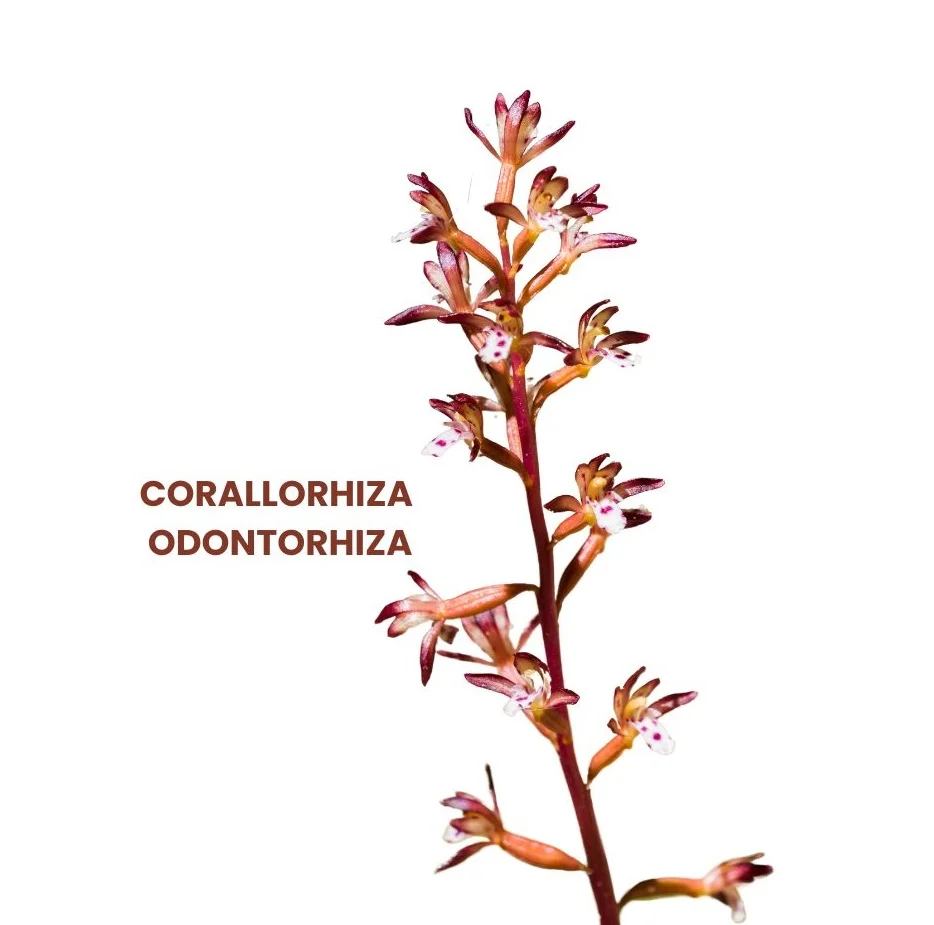Corallorhiza odontorhiza, commonly known as Crawley Root, is a notable remedy in homeopathic medicine.
It is primarily indicated for patients experiencing intense nervousness, restlessness, and specific fever patterns.
The unique symptoms associated with this remedy make it an important consideration for practitioners dealing with febrile conditions, particularly those presenting with nervous and dermatological manifestations.

Table of Contents
ToggleSOURCE INFORMATION
Scientific Classification
- Kingdom: Plantae
- Clade: Angiosperms
- Clade: Eudicots
- Order: Orchidales
- Family: Orchidaceae
- Genus: Corallorhiza
- Species: Corallorhiza odontorhiza
Origin
- Corallorhiza odontorhiza is native to North America and is typically found in moist, shady woodlands.
- It is a perennial herb belonging to the orchid family and is characterized by its unique, coral-like root structure.
Historical Facts
- Traditional Use: Indigenous peoples utilized various parts of the plant for medicinal purposes, although specific historical records on the use of Crawley Root in formal medicine are sparse.
- Homeopathic Adoption: In the 19th century, homeopaths began to recognize the value of various plants in treating specific ailments, leading to the inclusion of Corallorhiza odontorhiza in homeopathic practice for its unique symptoms.
DRUG PATHOGENESIS
The pathogenesis of Corallorhiza odontorhiza involves its specific effects on the nervous system and its role in modulating fever. Key characteristics include:
- Nervous System: Patients experience intense restlessness and nervousness, often exacerbated by the fever.
- Fever Pattern: The fever tends to be hectic, typically starting between 9 and 10 AM and lasting until midnight, characterized by a lack of thirst, chills, or perspiration.
- Sensory Symptoms: Patients may report a burning sensation in the palms and soles, contributing to their overall discomfort.
DIATHESIS
- This remedy is particularly suited for individuals with a nervous diathesis, marked by heightened sensitivity and an inability to tolerate extremes in temperature.
TEMPERAMENTS
- It is effective for those with a nervous and restless temperament who may be prone to anxiety.
KEY CHARACTERISTICS
- Hectic Fever: The fever is pronounced, with a characteristic timing, and does not follow typical patterns of thirst or perspiration.
- Restlessness: Patients exhibit significant nervousness and an inability to remain still, often expressing discomfort.
- Burning Sensation: The burning sensation in the palms and soles is a hallmark symptom, indicating heightened nervous system activity.
DETAILED ORGAN SYMPTOMS
FEVER
- Hectic Nature: The fever typically begins at 9 to 10 AM and can last until midnight, suggesting a distinct circadian rhythm.
- Absence of Thirst: Despite the presence of fever, patients do not experience thirst, which is unusual for febrile conditions.
- No Chills or Perspiration: The absence of chill or perspiration further distinguishes this fever from more common febrile states.
NERVOUS SYSTEM
- Intense Nervousness: The patient feels an overwhelming sense of restlessness, indicating significant nervous tension.
- Burning Sensation: The sensation of burning in the palms and soles highlights peripheral nerve involvement, which may be linked to the fever.
MODALITIES
- Worse: Symptoms may worsen in the morning, particularly as the fever sets in, leading to increased restlessness and discomfort.
- Better: Patients may find slight relief in cooler environments and can only tolerate minimal covering due to sensitivity.
RELATIONSHIP WITH OTHER DRUGS
Compare,
- Arsenicum Album: For its effects on fever and restlessness.
- Belladonna: For its role in treating acute febrile conditions.
- Gelsemium: For symptoms related to nervous tension and restlessness.
DOSE
- Potency: The typical dosage of Corallorhiza odontorhiza in homeopathy ranges from the first to third potency, depending on the severity and nature of the symptoms.
Frequently Asked Questions
What conditions can Corallorhiza odontorhiza help with?
- This remedy is particularly useful for patients experiencing hectic fevers accompanied by intense nervousness and burning sensations in the extremities.
How does Corallorhiza odontorhiza work?
- It acts primarily on the nervous system and modulates febrile responses, helping to alleviate symptoms of restlessness and discomfort associated with fever.
Is it safe to use Corallorhiza odontorhiza?
- Yes, when used as directed in homeopathic practice.
- It is crucial to consult a qualified homeopathic practitioner for appropriate guidance.
How should Corallorhiza odontorhiza be taken?
- It is typically administered in potencies ranging from the first to third, based on the specific case and practitioner recommendations.
Can Corallorhiza odontorhiza be used in children?
- Yes, but dosages should be adjusted for age and health status under professional guidance.
Glossary of Difficult Words
- Diathesis: A predisposition to a particular disease or disorder.
- Hectic: Referring to a fluctuating fever, often associated with significant discomfort.
- Perspiration: The process of sweating; the release of moisture through the skin.
- Restlessness: A state of being unable to remain still or calm due to anxiety or discomfort.
- Sensory Symptoms: Symptoms related to the senses, including sensations of pain, burning, or discomfort.
This comprehensive overview of Corallorhiza odontorhiza provides a detailed examination of its classification, pathogenesis, clinical applications, and relationships with other remedies, serving as a valuable resource for practitioners and patients alike.
